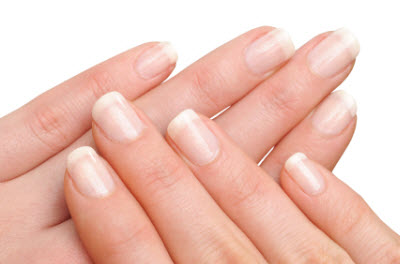 Nail health
Nail health
There are several day to day lifestyle tips which could help to improve nail health but in the first instance, it is important to diagnose and hopefully treat systemic an local conditions which could affect the health of the nails. Here are the main ones:
1. Health issues which may effect nails
- General episode of infection
- Episode of malnutrition
- Psoriasis
- Chemotherapy >>read more
2. Local damage to the nail beds
- Direct physical damage – hammers!
- Chemical damage – detergents
- Over manicuring
- Local fungal infection
- Local bacterial infection
General and local lifestyle tips to help nail health
Fingernail or toenail abnormalities can tell you a lot about your health. Apart from chemotherapy various medical conditions can effect the nails and if treated can improve the nails. These include fungal and bacterial infections, psoriasis and even thyroid disease. If you have an unexplained significant change in the health of your nails you should visit your GP. Otherwise the following tips may help:
Manicure and clean: Clip any excess nails that might catch on things and tear the nails even more deeply but don’t over trim or pick at the nail beds, which can cause more damage. Clear debris from under the nails and around the nail beds which may contain fungus and bacteria.
Avoid irritants: Identify the behavior or pattern of exposure to irritants that may lead to deterioration in nail health. As an example, after gardening or washing dishes – that had case, a new pair of effective kitchen and gardening gloves would be a good investment. Nail varnish remover can irritate some peoples the nails so try to avoid excess use.
Trauma and cold: Although obvious take care when using hammers and wear protective gloves when doing manual work! Use a good pair of gloves when skiing or other situations where the tips of the fingers get too cold.
Moisturise: Nails can be damaged when they are dry as the keratin bonds in the nails break down causing splits and cracks. Moisturising is very important on a regular basis and particularly after situations which could dry the nails such as after a bath, shower or swim and especially after using nail polish removers. In terms of which balm to use, only one has been tested in a double blind Randomised Controlled Study. This proved to be highly successful for reducing damage for those receiving chemotherapy but is available to any individual interested in naturally improve nail health – read more
Diet: There is a lot mentioned on health websites about diet and nail health but very little in the scientific literature. Nail stem cells are rapidly dividing and in theory would be susceptible to carcinogens in the diet and environment, the level of inflammation in the body, phytochemicals, vitamin and essential amino acid deficiencies required for healthy keratin formation so the follow healthy dietary considerations may be worthwhile:
- Carcinogens: Reduce the number of man-made chemicals and additives in the food by omitting most processed foods and those with artificial colourings and flavourings, high temperature baked carbohydrate (acrylamides) or burnt meat products (Aromatic amines) – read more.
- Processed sugars: There are several laboratory studies, which show that processed sugar and carbohydrates, with a high glycaemic index, promote chronic inflammation. This was eloquently highlighted by an experiment where half a group of animals were fed sucrose with their usual meal at comparable levels of Western diets and the other half a normal diet. The western diet led to increased expression of inflammatory markers including 12-lipoxygenase (12-LOX) and its arachidonate metabolites
- Phytochemicals: Some phytochemical rich foods have direct anti-inflammatory properties via a number of beneficial mechanisms and it makes sense to try and increase these in the diet. The green tea polyphenol, epigallocatechin-3-gallate (EGCG), and quercetin found in onions have been shown to suppress activation of the NF-kappaB family of transcription factors which in turn triggers immune and inflammatory pathways. Cruciferus vegetable are also potent inducers of transcription factors as demonstrated in a study which showed that rats fed a broccoli rich diet had reduced also had a reduction in the activation and production of inflammatory cytokines interleukin and tumour necrosis factor. Another recent animal trial, led by the School of Biological Sciences and Norwich Medical School, found that cruciferus vegetable extracts also blocked histone deacetylase (HDAC) inhibitor as well as matrix metalo-proteinase expression, which resulted in a protective effect on tissues. Many dark green vegetables and herbs such as ginger and turmeric contain natural salicylates, which block both COX-1 and 2 reducing the inappropriate production of prostaglandins.
- Vitamins and proteins: It is regarded as good practice to ensure adequate intake of foods rich in B vitamins including Thiamin (B1) folate (B9), biotin (B7) such as grains and dark green vegetables. Healthy protein rich foods would include eggs lentils and beans and other pulses.
- Plant and fish oils. Omega 3, found in oily fish and grass fed meat, is felt to have anti-inflammatory properties but taking extra amounts in clinical trials have not as not shown help nails. Nevertheless, as well know from serum tests many people in the UK are deficient in omega 3 and increasing oily fish intake to at least three times a week is recommended.
For specific advice during chemotherapy – see nails and chemotherapy page
